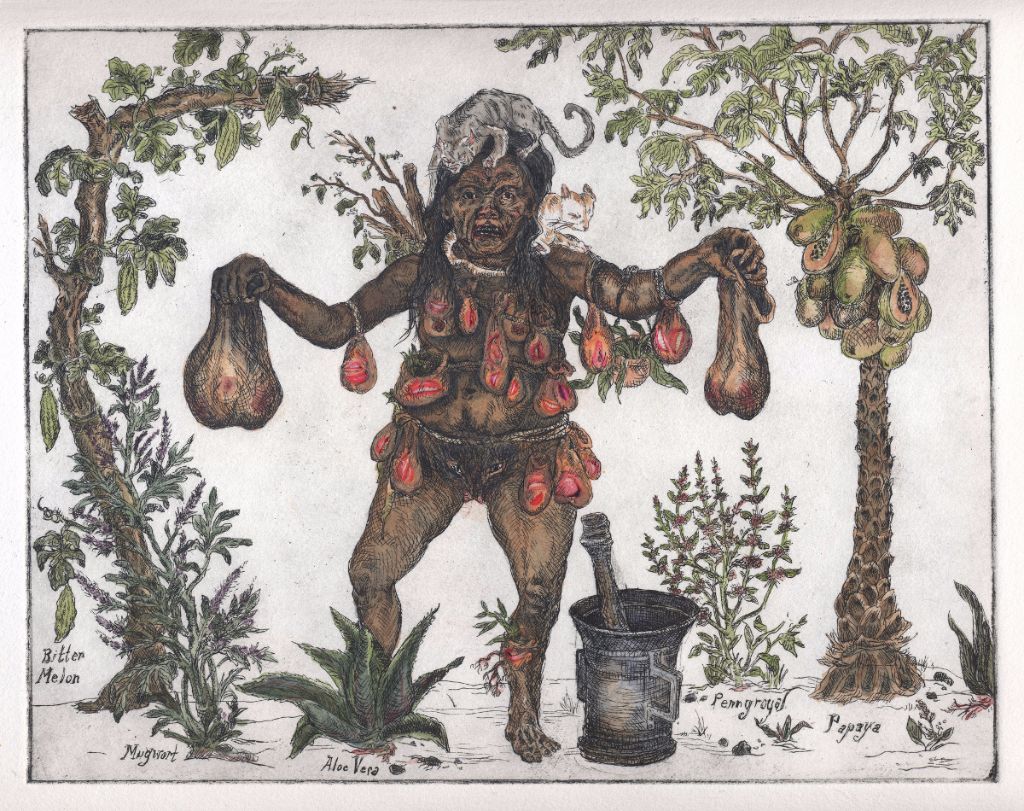…. and the Appropriation of Witch Iconography by Contemporary Female Artists.
Lucía Sciandro

Throughout human history, the concept of ‚woman‘ has carried with it endless negative associations; from Sirens luring and deceiving men to their demise, to Eve succumbing to temptation and unleashing misery in paradise. Examples of these figurations of women as ‚other‘, as evil, weak, devious and dangerous abound, however, no other symbol is perhaps as iconic as the witch.
Candice Lin’s Sycorax’s Collections (Happiness), from 2012, takes Shakespeare’s Tempest and re-imagines the character of Sycorax, borrowing from witch iconography some of its most well-known tropes. The piece is part of the installation „Sycorax’s Garden,“ in which the Los-Angeles-based artist investigates the social and biological properties of plants, and what role these plants had in negotiating power during the Age of Empire and the witch hunts.
The work references the role of women as healers, herbalists and witches, since plant knowledge was traditionally more accessible to women than other scientific practices. In Sycorax’s Collections (Happiness), Lin appropriates many elements that conform the archetype of the old hag (her skin and nakedness, the cauldron, the cats) epitomized in such canonic works like Dürer’s Die Hexe, while simultaneously appropriating the visual language of science books and botany illustrations. She surrounds the figure of the witch with plants known for their medicinal properties, and she has her carrying sacks of laughing mouths (happiness), subverting the traditional notion of the witch as harmful and evil.
Through the appropriation and juxtaposition of these two sets of symbolic visual languages she connects science and mysticism, and reclaims the figure of the witch as a symbol of ancient knowledge and healing powers.


